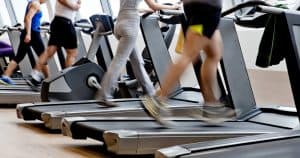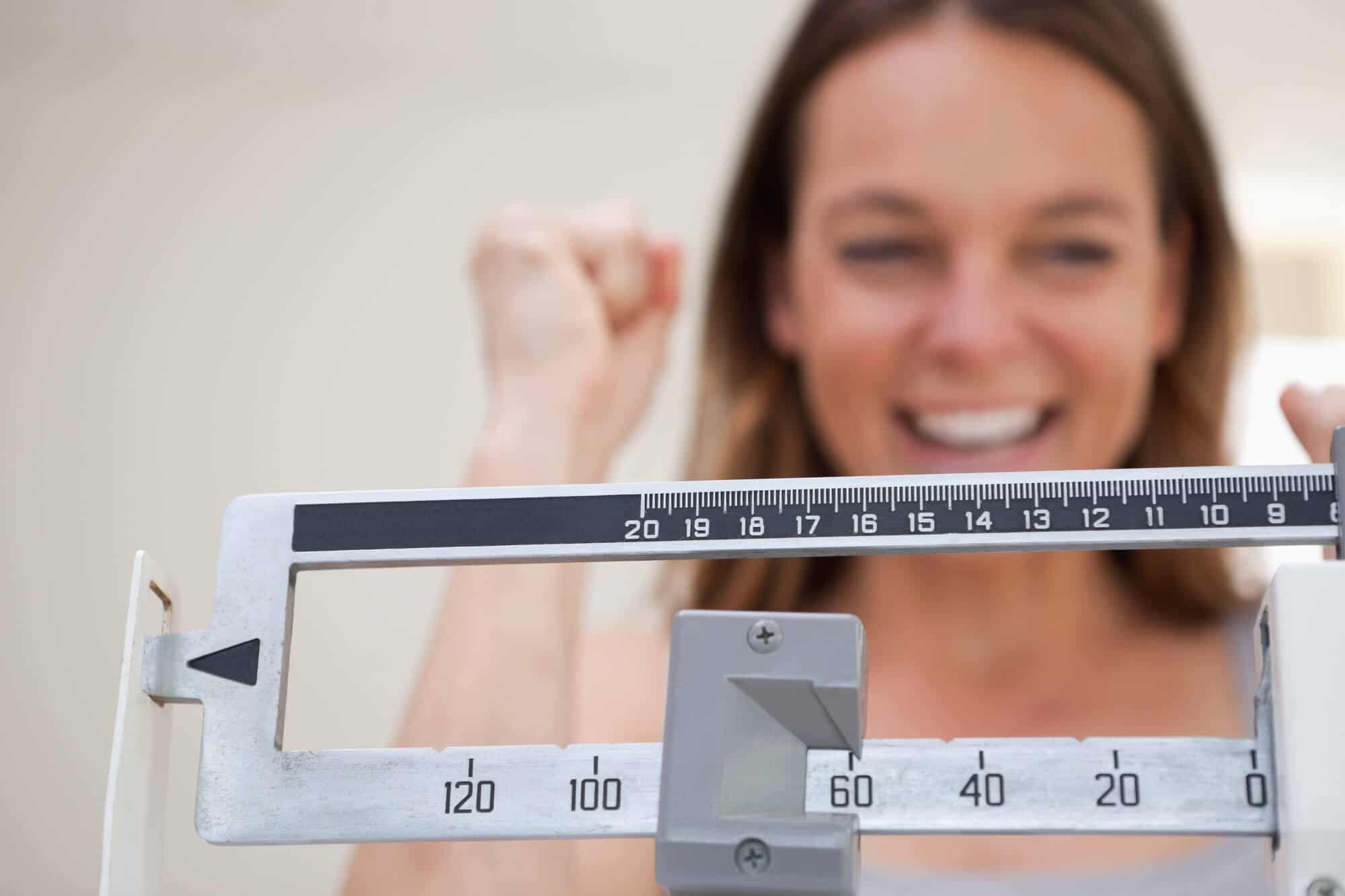Staying in good shape is extremely important, not only for our self image, but also for our health and well being. While there are tons of ways out there to lose weight, the most successful and scientifically backed method remains proper exercise and maintaining a healthy diet.
Since running is one of the most popular forms of exercise, a lot of people end up wondering “how much should I run to lose weight?”
Ideally, weight loss depends on achieving a state of caloric deficit. If you maintain a healthy diet and consume fewer calories than what you burn, you should consider running for anywhere between 15 to 30 minutes at a comfortable pace every day while taking at least separate 2 rest days every week.
With that said, losing weight doesn’t directly depend on exercise but running can help you make the most out of your weight loss journey, and in today’s article, we’ll walk you through everything you need to understand regarding physical activity for weight loss.
Important Concepts to Understand Regarding Running and Weight Loss
When it comes to weight loss, there’s a lot of misleading information out there. For that reason, there are some essential concepts that you need to understand regarding weight loss. Let’s start by taking a closer look at those concepts and what you need to know about them:

1. Basal Metabolic Rate (BMR)
Even when we’re just sitting, our bodies keep burning calories. This happens because even during rest, our bodies need the energy to sustain basic bodily functions, such as circulation, breathing, digestion, tissue regeneration, and even blinking!
All these processes end up consuming a specific number of calories, which is known as the “Basal Metabolic Rate” or “Resting Energy Expenditure”.
In layman’s terms, these are the minimum number of calories that your body will burn throughout the day without any movement or exercise.
You can easily calculate your BMR using simple online calculators by entering your gender, age, height, and weight. These calculations usually use the Harris-Benedict formula or Mifflin-St Jeor.
Ideally, the BMR for the average male is anywhere between 1,600 to 1,800 calories, while the BMR for the average female is typically less at 1,400 to 1,600 calories.
2. Calorie Deficit
The next concept that you need to grasp is calorie deficit. Once again, your body burns a specific number of calories per day.
In order to lose weight, you need to consume less calories than you burn. This state is known as “calorie deficit”.
In other words, if you consume 1,600 calories per day and you burn 1,700 calories per day, you’ve achieved a caloric deficit of 100 calories, and you’re going to lose that much calories in weight.
On the other hand, if you end up burning a total of 2,000 calories per day but you’ve consumed 2,200 on the same day, you’re going to gain 200 calories that will eventually turn into fat, which is known as “calories surplus”
The concept of calorie deficit is widely accepted in all sports sciences and remains the golden standard for weight loss.
In other words, no matter how much you run, you’ll always need to end up burning more calories than you consumed throughout the day in order to lose weight.
3. Quick Loss = Quick Gain
The old proverb “slow and steady wins the race” is a true situation in the case of weight loss. A lot of people are quickly excited about their initial weight loss after starving themselves and performing vigorous exercise.
The only problem here is that such a method is highly unsustainable and you’ll end up abandoning your weight loss plan.
What you need to know here is that weight loss doesn’t necessarily mean fat loss. Instead, your body will end up losing a portion of its muscle mass as well.
In order to lose as much fat as possible and stay committed to your running workout, make sure that you don’t overwhelm yourself or your body with severe changes.
4. You Can’t Target a Specific Body Part While Trying to Lose Weight
A lot of people are trying to target weight loss at specific parts of their body, such as belly fat. However, the human body usually loses body fat as a whole.
In other words, running won’t doesn’t make you lose thigh fat specifically. Yet, you can build muscles around a specific body part to help it look more toned.
How Many Calories Do I Burn While Running?

The number of calories burnt during any given exercise will vary depending on various factors, including:
- Intensity and duration of the exercise
- Your metabolic rate
- You body weight
When it comes to running, a popular estimate for the number of calories burnt is 150 calories for every mile that you run at an average pace.
On the other hand, the American Council on Exercise has released a chart that specifies the number of calories burnt for every minute you spend running depending on the body weight of the individual.
For instance, a 120 pound runner will burn around 11.4 calories for every minute while a 180 pound runner will burn up to 17 calories during the same amount of time.
In other words, the heavier your body is, the more calories you’re going to burn for the same exercise because of the larger body mass.
This means that, for the average 170 pound person who burns around 16 calories per minute while running, you should expect to lose around 480 calories during a 30 minute running session.
Keep in mind that the intensity of the workout will also play a role in the exact number of calories burnt, as all of these numbers are just estimates.
For example, a 120 pound jogger will burn around 9.3 calories per minute, which is less than what you burn while running. These findings are also backed by various sports medicine studies.
How Many Calories in a Pound of Fat?
A lot of studies have been conducted in order to figure out the exact amount of calories necessary to burn one pound of body fat.
For example, a relatively old study found that a pound of fat will typically require 3,500 calories to burn. Yet, the exact number varies between studies and can be as high as 3,700.
Based on this information, having a caloric deficit of around 500 calories will help you lose one pound, in theory, in around 7 to 10 days, although the mechanics of weight loss in real life may work differently.
How Does Running Help in Weight Loss?
As previously mentioned, your body will only lose weight if it burns more calories than it consumes.
However, almost all fitness experts or studies out there recommend workouts like running as an excellent way to lose weight, such as this well established 2015 study about the role of fitness and exercise in losing weight.
The reason why running is associated with weight loss is that the high impact, high interval exercises help in two different methods:
- Burning more calories
- Raising your resting metabolic rate
Since running requires a lot of energy, your body ends up burning more fat in order to consume enough calories to meet your energy demands.
However, the number of calories burnt while running isn’t usually enough for weight loss. Instead, the majority of weight loss happens due to the raised metabolic rate.
In other words, running raises your metabolic rate, in general, so you end up burning more calories throughout the day by being more active.
What Is the Best Running Technique for Weight Loss?
You now know that a 30 minute run will help you burn anywhere between 250 to 500 depending on your body weight and running speed.
However, if you’re a beginner running continuously for 30 minutes might be quite exhausting, especially at a high pace, this might be overwhelming if not almost impossible.
Luckily, you don’t have to run continuously in order to reap the benefits of running and ramp up your caloric burn rate.
Surprisingly, there are different running techniques and patterns that can help you achieve the same benefits of running without running at maximum pace for the entire session.
The best running technique out there is the interval training technique. In this method, you alternate between running and walking during the sessions.
For example, you run for one minute at your maximal pace, then you calm down and walk for the next 30 to 60 seconds depending on your stamina.
While running at a maximal pace, your metabolic rate increases dramatically, which allows you to burn more calories in general. This high metabolic rate remains high during the walking breaks, so you end up burning as many calories as running at a high pace for the entire session.
Not only that, but you can actually burn more calories with this method for some reasons:
- With a 30 second rest in between each two maximal pace runs, your total workout time could end up increasing, which ends up burning more calories
- After resting for a bit between maximal runs, you can reach generally higher speeds
- Reaching your maximum speed for a longer period of time will raise your resting metabolic rate in the long run
Why Running Is a Great Way for Weight Loss
While there are tons of sports and forms of exercise out there, running remains one of the most popular and effective methods for weight loss.
The reason behind that is the effectiveness of running. As previously established, running helps you burn more calories than a lot of forms of exercise.
In fact, the sports that burn the most calories are the ones that involve a lot of running. These findings are backed by several long term studies.
In addition to all this, running is technically free, provided that you have the necessary gear to maintain proper form while running. Even if you run in club or running tracks, they’re still remarkably more affordable when compared to going to the gym.
Additionally, running outdoors is a proven stress reliever and a great way to enjoy your free time. However, if the weather is bad, you can also run outdoors using a proper treadmill!
Moreover, running also comes with a huge range of health benefits, such as:
- Our bodies are naturally built for running, so you don’t have to use any specific gear to run
- Popular form of exercise, so you can easily find tons of running events and running mates.
- Running strengthens your heart and circulation by improving your cardiovascular health and lowering cholesterol levels
- You’ll enhance and increase your muscle mass stamina, and aerobic endurance
- It helps in fighting insomnia, anxiety, depression, and improves sleep quality
- Helps in regulating blood sugar levels
How Much Should I Run to Lose Weight? Important Tips to Consider
Now that you know more about weight loss mechanics and how running can help you lose weight, here are some additional guidelines and tips that you should always keep in mind to make the most out of your training:

1. Follow a Healthy Diet Plan
Your calorie intake remains the golden standard when it comes to losing weight. Always remember that working out, in general, isn’t a good substitute for a healthy diet plan.
If you run everyday for over 30 minutes but you don’t check what you eat, you might end up not losing any weight. Not only that, you might actually end up gaining more weight than started with.
Make sure that your diet plan isn’t within an acceptable caloric range, but is also a balanced one. This is because running and working out in general requires proper nutrition.
For that reason, eating after working out is usually the best time and your meal should have all the necessary macronutrients, especially proteins. You should also have enough fibers by eating a lot of fruits and vegetables.
2. Mix Up Your Training Routine and Avoid Repetition
While planning your running sessions for the week, always make sure that you bring in some variety to your workout routine. This change can take a wide variety of forms, such as changing your running route.
This way, your running session won’t feel repetitive or borning and you’ll always see something new while running.
Another way to mix things up is by changing the terrain at which you’re running. For example, you can go off road and have a trail run, which introduces a bit of incline that will strengthen your calf muscles.
So, unless you do best when you maintain a good routine, try to mix things up while running to stay motivated and interested in pushing your limits.
3. Invest in Proper Running Gear
If you’re new to running, make sure that you invest in proper gear for running. This includes a good pair of running shoes, such as:
- Asics Gel-Nimbus
- Men’s Ultraboost 22
- Under Armor Charged Assert 9
- Nike Air Zoom Pegasus 36
Running shoes are built with proper cushioning, slip resistant treads, and springy soles that help in improving your performance and keeping your feet comfortable while running.
Additionally, running shoes are built with proper arch support that is necessary to correct your feet posture while running, which is necessary to avoid running related injuries such as patellofemoral pain syndrome (runner’s knee).
In addition to running shoes, you should also consider buying running shorts and shirts as well as other necessary tools while running.
Buying new running gear always feels like a fresh start, which helps you stay motivated when the fatigue starts kicking in.
4. Don’t Underestimate Recovery and Rest Days
Speaking of fatigue, even if you already have decent stamina, your muscles will start to feel sore after the first few workouts. This is perfectly natural and will go away as with proper after workout care.
For example, a lot of elite runners recommend applying cold packs to your knees after a workout session to curb the fatigue and speed up recovery.
In addition to icing the knees, other popular methods for recovery include using foam rollers, deep tissue massage, and cryotherapy.
You should also consider having at least 2 rest days for every 5 days of workout, preferably separate to allow maximum recovery.
5. Participate in Running Events or Pick a Running Buddy
Running alone might feel a bit tedious after some time. To stay motivated, consider having a running buddy so that you can hold each other accountable.
Moreover, there are plenty of great running events that you can participate in as a beginner, such as the 5K race.
In fact, one of the best ways to lose weight is to prepare for the 5K race, which requires about 2 to 3 months of regular running sessions.
There are many 5K events in every state and province in North America, so you can always check the ones available in your area and prepare for them.
6. Consider Hiring a Personal Running Coach
Whether you don’t have enough time to plan your workouts or you’re looking for professional advice, hiring a personal coach is always a great idea!
Personal coaches are highly knowledgeable and can easily plan your workouts around your schedule. Moreover, they’ll provide you with extra encouragement to stay motivated.
7. Increase Your Endurance and BMR by Resistance Training
Strength training is a great way to increase your endurance and optimize your body for weight loss. For starters, increasing your muscle mass will generally ramp up your basal metabolic rate, which encourages your body to lose weight faster.
You should also workout all the muscle groups that are worked during running, such as quads, glutes, and hamstrings. This way, you’ll be able to run for longer without injuring yourself.
8. Always Monitor of Your Running Stats
Another way to motivate yourself while running is to always keep track of your running stats. The best way to do this is by getting a smartwatch or a smartband that can measure your running speed, mileage, estimated calories burnt, heart rate, etc.
Monitoring your running stats will help you keep up with your performance so you can always strive for better.
9. Eat After Your Runs, Not Before
One of the most common questions regarding working out and eating is whether you should eat before or after training.
Ideally, you should eat after training for various reasons. First, running on a filled stomach can cause a lot of GIT issues, such as flatulence and diarrhea. This can be more noticeable if you already suffer from sensitive stomach or GIT problems, such as irritable bowel syndrome.
Eating after running won’t only avoid going through these issues while running, but will also help you make the most out of your meals in terms of nutrition.
10. Consider the Timing of Your Runs
Another factor to consider is whether you should run in the morning, evening, or in the middle of the day.
Ideally, the best time to run is early in the morning because you’ll have the most energy throughout the day, which helps you give your best performance while training and have the rest of the day to recover.
Does Running Indoors and Outdoors Have the Same Effect?

Technically, whether you’re running indoors or outdoors will have the same impact on your body, especially when it comes to muscle use.
Running outdoors comes with a lot of benefits, such as feeling the ground and avoiding repetitions.
However, running on a treadmill also comes with convenience in training schedule, safety, and pre-optimizing your workout with features like running modes and incline running.
Final Thoughts On How Much Should I Run to Lose Weight
This wraps it up for today’s guide that walks you through everything you need to know regarding running and healthy weight loss.
As you can see, a 30 minute run for 5 days a week should be a good way to lose fat and burn extra calories. However, running and physical activity will only work if you follow them up with a proper diet plan that consumes fewer calories than what you burn.
Make sure that you follow the previously mentioned tips in order to make the most out of running and other forms of interval training.

